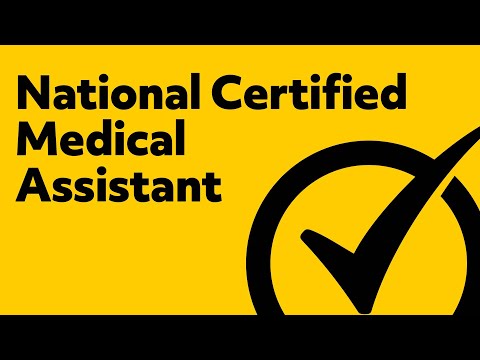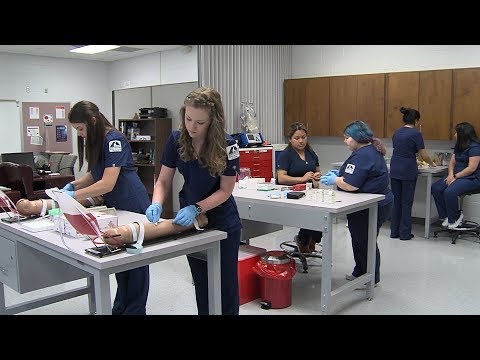What’s the Difference Between a Medical Assistant and a Pharmacy Technician?
Contents [show]
Are you interested in working in the medical field but not sure which position is right for you? If you’re wondering what the difference is between a medical assistant and a pharmacy technician, you’ve come to the right place. Keep reading to learn more about the duties of each position and what you can expect in terms of job outlook and salary.
Checkout this video:
Job Duties
Medical assistants and pharmacy technicians are both vital members of the healthcare team, but their job duties are quite different. Medical Assistants generally work directly with patients, providing assistance with tasks such as scheduling appointments, taking medical histories, and measuring vitals. Pharmacy technicians, on the other hand, work more behind the scenes, filling prescriptions and answering customer questions about medications.
While both medical assistants and pharmacy technicians are important members of the healthcare team, their job duties are quite different. Medical assistants generally work directly with patients, providing assistance with tasks such as scheduling appointments, taking medical histories, and measuring vitals. Pharmacy technicians, on the other hand, work more behind the scenes, filling prescriptions and answering customer questions about medications.
Education
Medical assistants typically have a postsecondary certificate, while pharmacy technicians usually have a high school diploma or equivalent. Medical assistants must complete an accredited program, which takes about 1 year to complete. Many community colleges, vocational schools, and private trade schools offer medical assistant programs. Some programs include externships or internships that provide hands-on experience.
Pharmacy technicians typically complete a 1-year certification program that is available through community colleges, technical schools, and online programs. Certification programs prepare students for the Pharmacy Technician Certification Exam (PTCE) administered by the Pharmacy Technician Certification Board (PTCB). After passing the PTCE, techs receive their certification and can use the designation CPhT. Some states have additional requirements for pharmacy technicians, such as completing a certain number of continuing education credits every year and passing a state-specific exam.
Certification
Both medical assistants and pharmacy technicians can pursue voluntary certification to demonstrate expertise in their field and stand out to potential employers. Although there are some similarities, there are also important differences between these credentials. For medical assistants, the Certified medical assistant (CMA) credential is offered by the Certifying Board of the American Association of Medical Assistants (AAMA), while pharmacy technicians can earn either the Certified Pharmacy Technician (CPhT) credential offered by the Pharmacy Technician Certification Board (PTCB) or the Registered Pharmacy Technician (RPhT) credential offered by the National Healthcare Association (NHA).
Salary
One of the main differences between medical assistants and pharmacy technicians is salary. Medical assistants earn a median salary of $33,610 per year, according to the Bureau of Labor Statistics (BLS), while pharmacy technicians earn a median salary of $32,700 per year.
While both medical assistants and pharmacy technicians are vital members of the healthcare team, their roles and responsibilities differ. Medical assistants typically work in physicians’ offices and perform administrative and clinical tasks. Pharmacy technicians, on the other hand, work in pharmacies and are responsible for tasks such as measuring medications, labeling bottles and taking inventory.
Job Outlook
Job growth for medical assistants is expected to be much faster than average for all occupations through 2024, according to the U.S. Bureau of Labor Statistics (BLS). The number of jobs for pharmacy technicians is projected to increase by 9% during the same decade.
Career Paths
While medical assistants and pharmacy technicians may both work in healthcare settings, their job duties and responsibilities are quite different. Medical assistants typically provide basic clinical care and administrative support to patients, while pharmacy technicians work under the supervision of a pharmacist to dispense medications.
Here’s a more detailed look at the main differences between these two types of careers:
Medical Assistants:
-Provide basic clinical care to patients, such as taking vital signs or administering injections
-Perform administrative tasks, such as scheduling appointments or managing medical records
-May have some limited training in laboratory procedures or diagnostic testing
Pharmacy Technicians:
-Work under the supervision of a pharmacist to fill prescriptions and dispense medications
-May also be responsible for tasks such as answering customer questions, handling insurance claims, or stocking shelves
Key Differences
There are several key differences between medical assistants and pharmacy technicians. Medical assistants typically work in clinics and doctor’s offices, while pharmacy technicians mostly work in pharmacies. Medical assistants generally have more customer service duties, such as scheduling appointments and taking patients’ information, while pharmacy technicians often have more technical duties, such as counting pills and measuring medications. another key difference is that medical assistants usually need to be certified, while pharmacy technicians may or may not need to be certified, depending on the state.
Similarities
There are quite a few similarities between medical assistants and pharmacy technicians. Both of these roles involve working with the public, providing customer service, and working with insurance companies. Both medical assistants and pharmacy technicians may also be responsible for scheduling appointments, maintaining medical records and billing patients.
Both medical assistants and pharmacy technicians typically need to have a high school diploma or equivalent. Although not required, completing a postsecondary education program can provide individuals with the knowledge and skills necessary to be successful in these roles. medical assistant programs typically take one year to complete, while pharmacy technician programs may take up to two years to complete.
Additionally, both medical assistants and pharmacy technicians must pass a certification exam in order to be eligible for employment. The Certified Medical Assistant (CMA) exam is administered by the American Association of Medical Assistants (AAMA), while the Pharmacy Technician Certification Exam (PTCE) is administered by the Pharmacy Technician Certification Board (PTCB).
Pros and Cons
There are many differences between medical assistants and pharmacy technicians, but the most important difference is the level of education and training required for each position. Medical assistants typically need only a high school diploma or equivalent, while pharmacy technicians must have at least a 2-year degree or completing a certified pharmacy technician program.
Medical assistants also generally have more clinical duties than pharmacy technicians, such as taking medical histories and helping patients with minor ailments. Pharmacy technicians, on the other hand, are responsible for more behind-the-scenes work, such as measuring and mixing medications and preparing insurance claim forms.
Both medical assistant and pharmacy technician positions have their pros and cons. If you’re interested in a career in healthcare, you’ll need to weigh these pros and cons carefully to decide which position is right for you.
Conclusion
In conclusion, medical assistants and pharmacy technicians both play vital roles in the healthcare industry. Medical assistants typically provide direct patient care, while pharmacy technicians focus on preparing and dispensing medications. Although the two jobs share some similarities, there are also several key differences between them. When choosing a career in healthcare, it’s important to carefully consider your interests and skills to decide which role is right for you.







